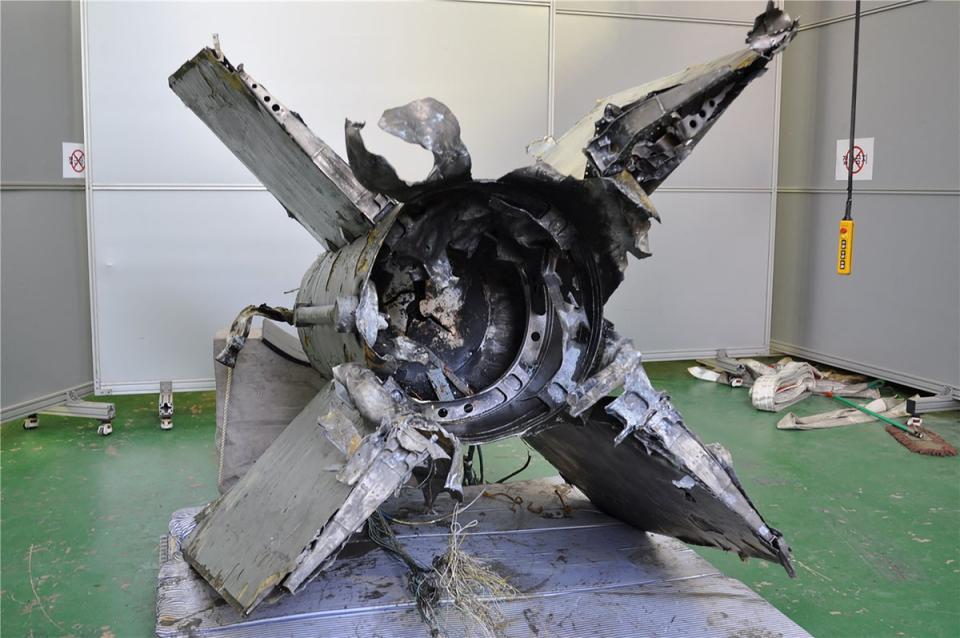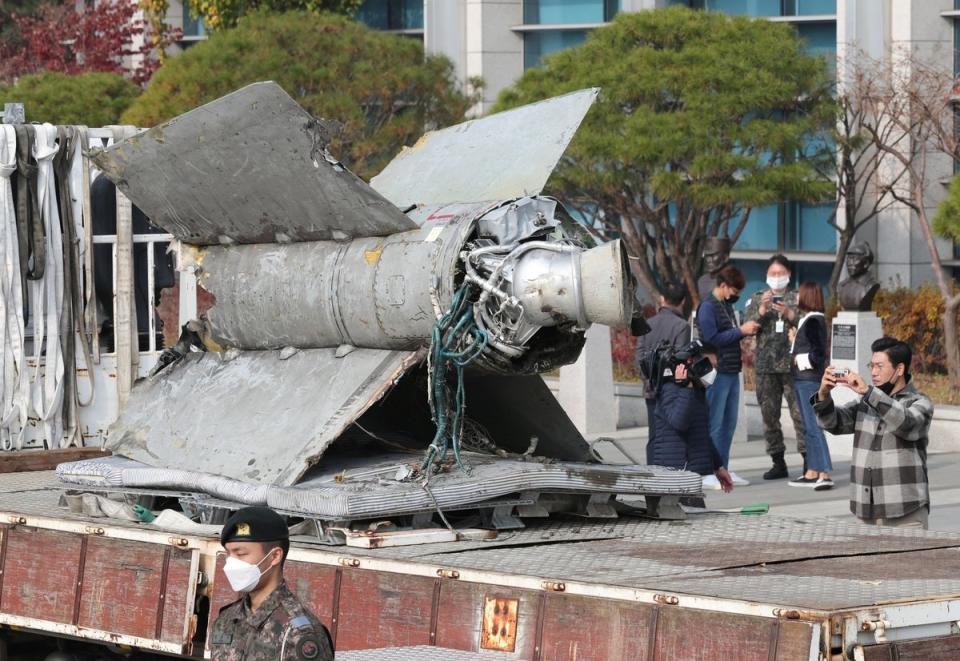Analysis of North Korean missile debris reveals it is similar to ones used by Russia in Ukraine
Analysis of debris from a North Korean missile salvaged from South Korean waters has revealed that it was a Soviet-era SA-5 surface-to-air missile, similar to projectiles used by Russia in the war against Ukraine, South Korea’s military said.
It comes a day after North Korea rejected America’s accusations that it exported artillery shells and ammunition to Russia for use in the war, a potential violation of United Nations resolutions on Pyongyang that ban it from exporting weapons.
South Korea salvaged the debris of North Korea’s ballistic missile launch on 2 November that flew across the inter-Korean maritime border and landed in South Korean waters for the first time, triggering alarm.

The South Korean defence ministry said on Wednesday that the retrieved debris were parts of SA-5 missile, citing its appearance and feature, adding Russia has used similar missiles in Ukraine.
“This SA-5 missile launch was a clearly deliberate, intentional provocation,” it said in a statement. “The SA-5 also has characteristics of a surface-to-surface missile, and Russia has used similar missiles in Ukraine for surface-to-surface attacks.”
On Wednesday, North Korea again fired at least one ballistic missile toward its eastern sea, keeping the ongoing tensions high in the Korean peninsula.
The SA-5 is an air defence missile originally designed by the Soviet Union, where it was designated the S-200, to take down high-altitude targets and strategic bombers.
The missile was exported around the world, and is still in service in at least a dozen countries, according to the Center for Strategic and International Studies’ Missile Defense Project.
North Korea took delivery of the SA-5 systems in the mid 1980s, according to a 2020 survey by Dutch researchers, titled “Armed Forces of NorthKorea: On the Path of Songun”.

The researchers wrote that the two sites in North Korea that are equipped with these very long-ranged systems “cover the entirety of NorthKorean airspace as well as a sizable chunk of that of the South”.
“However, having been designed to counter strategic aircraft, their use against modern fast jets such as the F-15 and F-16 is questionable to say the least.”
The debris of the missile was a part of an unprecedented barrage of missile launches by North Korea, which included a record of 26 missile launches in a single day. The SA-5 was the first North Korean missile to splash down into South Korean waters, violating a 2018 inter-Korean military pact.
It landed 35 miles east of the South Korean city of Sokcho, triggering air raid alerts on Ulleung Island.
In September, US officials said newly declassified intelligence found that Russia was in the process of importing millions of rockets and artillery shells from North Korea. Hitting back, Pyongyang asked the US to stop making “reckless remarks” and to “keep its mouth shut”.
On 2 November, White House’s national security spokesperson John Kirby said: “Our indications are the DPRK is covertly supplying and we’re going to monitor to see whether shipments are received.
“Our information indicates that they’re trying to obscure the method of supply by funneling them through other countries in the Middle East and North Africa.”
The UN sanctions prohibit North Korea from any arms sales to other countries. But UN reports have revealed that the Kim regime has conducted illicit weapons sales to Syria, Libya, Sudan and other conflict-ridden countries around the world.

